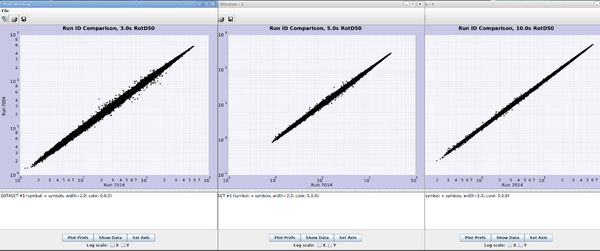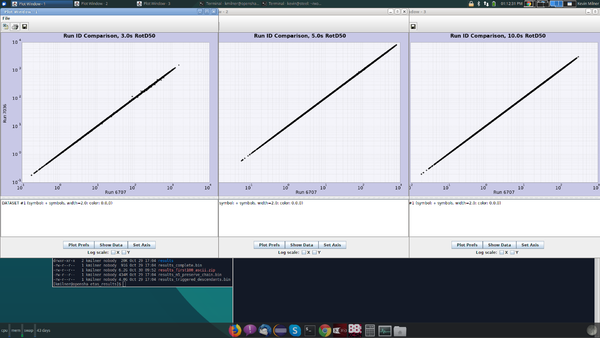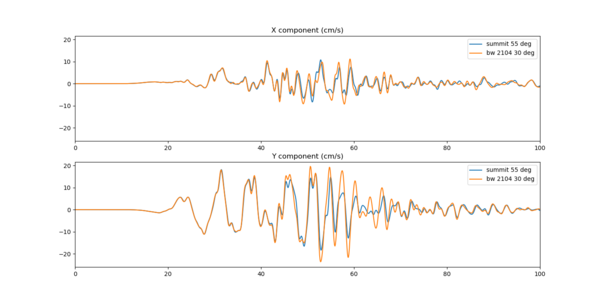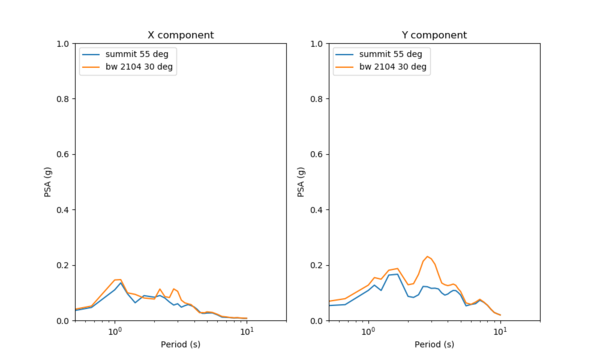Difference between revisions of "CyberShake volume rotation"
| Line 29: | Line 29: | ||
== Rotation angle == | == Rotation angle == | ||
| − | After running a series of tests, we identified that the difference seems to be related to the rotation angle. | + | After running a series of tests, we identified that the difference seems to be related to the rotation angle: the smaller values are produced when running with a rotation angle of -55 degrees (what we have used in the past for southern California sites), and the larger values with a rotation of -30 degrees. Neither the site nor this source are near the volume boundaries. |
| + | |||
| + | We are currently running comparisons for both USC with ERF 36, at both rotation angles, and ERF 51 with a 1D velocity model, at both rotation angles. | ||
Revision as of 19:43, 16 December 2019
This page documents the differences we see in results when using volumes with different rotation angles, and the investigation of these differences.
Problem description
When attempting to replicate on Summit results for site USC using ERF 51 (an RSQSim-based ERF) originally obtained on Blue Waters, we ran into some difficulty.
The plot below shows a comparison of RotD values obtained on Summit (Run ID 7054) vs on Blue Waters (Run ID 7014). As you can see, there is a general trend but more scatter than anticipated; the two results should match almost exactly.
As a point of comparison, here are the same plots for the USC ERF 36 verification runs:
In particular, we identified source 684, rupture 323 as an event to investigate further. At a frequency of 3 seconds, the values obtained on Blue Waters were almost twice as big as those on Summit, 0.23 cm/s2 vs 0.12 cm/s2.
Below are plots comparing the seismograms and the geometric mean PSA values for these events on the two systems. The seismograms start to diverge after about 45 sec, and the geometric mean PSA values show the largest difference at about 3 sec.
Rotation angle
After running a series of tests, we identified that the difference seems to be related to the rotation angle: the smaller values are produced when running with a rotation angle of -55 degrees (what we have used in the past for southern California sites), and the larger values with a rotation of -30 degrees. Neither the site nor this source are near the volume boundaries.
We are currently running comparisons for both USC with ERF 36, at both rotation angles, and ERF 51 with a 1D velocity model, at both rotation angles.



